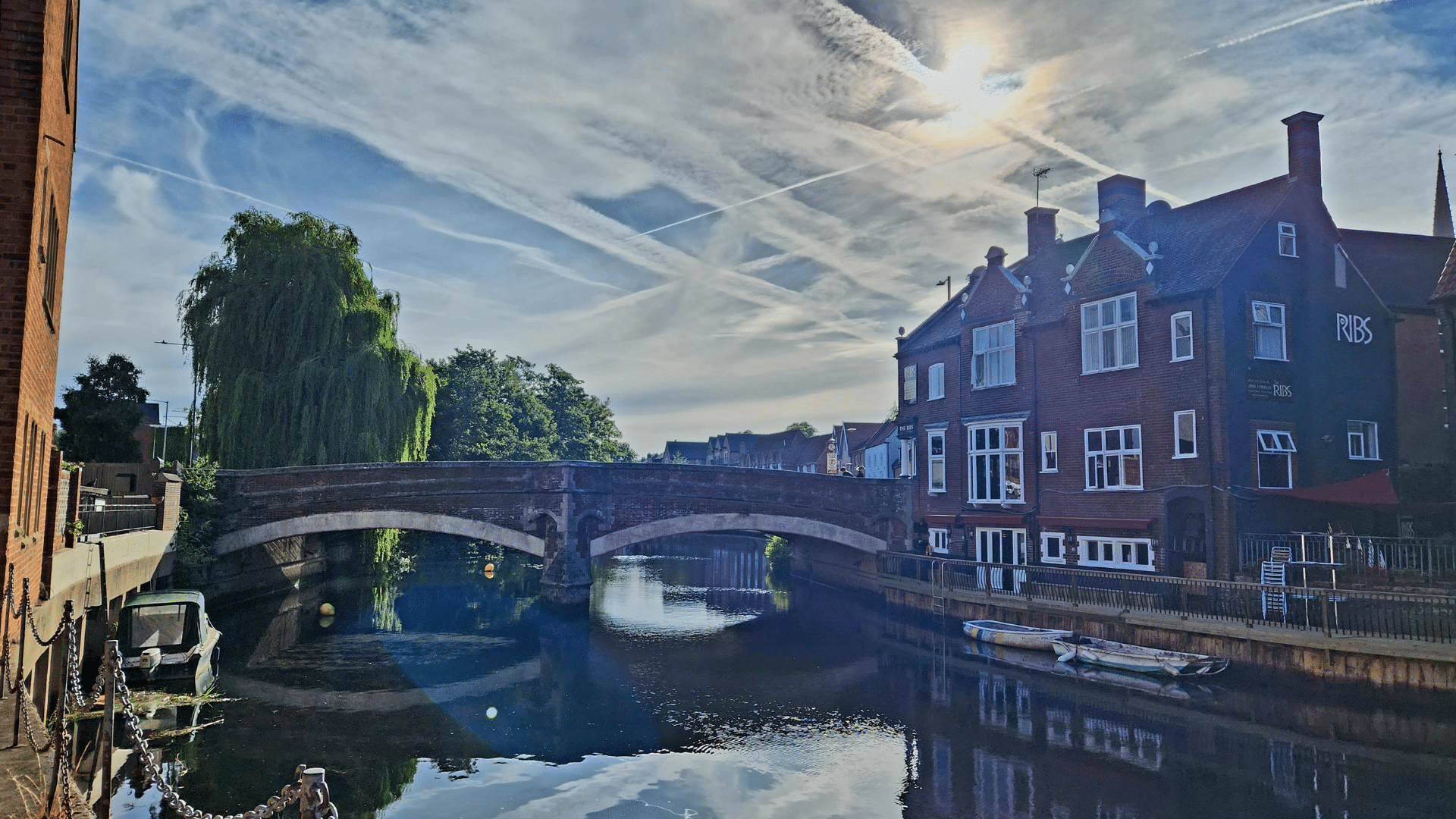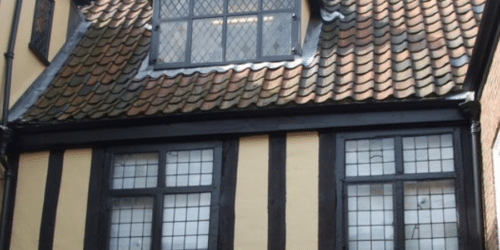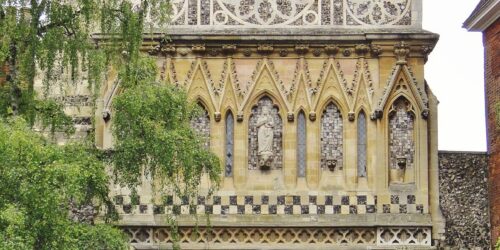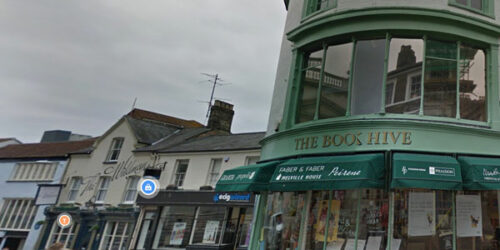
Read this Walking Norwich piece from writer and NCW resident Wayne Rée, exploring Norwich and Singapore by way of their ghosts.
Wayne describes the myth of the spectre of Fye Bridge, linking Norwich’s taste for the supernatural to that in Singapore and Southeast Asia. He discusses the history of witchcraft, the relationships we build with ghosts, and how we might change our approach to these old myths.
This residency was generously supported by the National Arts Council of Singapore.

Read on for Wayne’s creative commission.
On my first morning in Norwich, I walked along the River Wensum for about an hour and a half, but the ghost didn’t speak to me. I wasn’t entirely surprised, to be honest. After all, I didn’t want to tread too close to where she’s frequently spotted — not yet anyway — and I was still a stranger here. The pontianak that walked beside me might have something to do with it too.
###
On the surface, my time in Norwich didn’t actually have anything to do with spectres. I was spending my residency writing my first novel — a dystopian speculative fiction story — which is an undertaking that’s scary enough without looking for wandering spirits. But I’m also the co-creator of a narrative horror podcast called Ghost Maps, so let’s just chalk it up to professional curiosity.
No one seems to know for sure who the ghost is. What I’d managed to find out was that she’s a woman that’s been seen carrying a bundle of sticks and walking along Quayside, near Fye Bridge. The story goes that she would drop her sticks and, if you helped her pick them up, your reward would be an inevitable fiery death.
Some people say that she was a lollard, a derogatory term for heretics during the 14th to 16th century. Lollards were burned alive at the aptly — and grimly — named Lollard’s Pit, which was a relatively short walk from Fye Bridge. (Lollard’s Pit is now a pub, by the way. As far as I can tell, they’re a whole lot more welcoming to heretics these days.)

Others, however, say that she’s the ghost of a woman that was accused of being a witch — and where she’s been spotted seems to support this theory, if you ask me. Fye Bridge was the site of the infamous ducking stool, a device initially used as a means of humiliating women that was turned into an instrument of torture in the mid-1600s, during the East Anglian witch trials.
Most of the accused were eventually hanged for their “crimes.” A few were said to have been burned alive in places that were more public than Lollard’s Pit, to drum up support for the trials.
These women, like the lollards, had to suffer one last indignity before their executions: carrying their own kindling to the stake.
###
On my third morning here, as the pontianak and I walked over the bridge — this version built in 1933, though a bridge has stood in that location from as early as 1153 — I could’ve sworn that I heard a whisper in the wind. I turned to the pontianak — her long black hair covering her face; her plain white dress stained with dried blood — and she seemed to hear it too.
The pontianak is a Southeast Asian creature of myth and, as with a lot of myths, her story has evolved over time. These days, she’s arguably best known as the vengeful spirit of a woman who died during childbirth. When night falls, she descends from her perch in a banana tree and preys on abusive men, disembowelling them with her razor sharp claws.
When I first read about the ghostly woman near Fye Bridge, I invited the pontianak to join me on my trip to Norwich. Like almost every kid in Singapore, I was raised to fear her. Back then, the stories never really focused on her prey; only her terrifying appearance and bloody actions.
Ever since I started writing Ghost Maps though, I’ve grown to appreciate her story — and, I’d like to think, maybe even understand her better. So, I wanted to see what would happen if she met another spirit born of tragedy. I laid my cards on the table and told her all of this. It is, as many people know, unwise to lie to a myth. To my surprise, she actually agreed to come along — but she wouldn’t tell me why.

The pontianak and I crossed the street in front of The Ribs of Beef pub towards Quayside, and strolled by the river. A week later, I would join The Shoebox Experience’s Norwich Knowledge Tour (try saying that five times fast). Our guide, Ollie, would point to the opposite side of the river, where the ducking stool had once stood. He would also tell us about how a row of wooden blocks along the river, designed to look like crates, each displayed the names of historic businesses that had occupied the area and the people that had lived there.
The closest thing that the ghost had was a plaque that talked about the ducking stool. Right next to the plaque was a dumpster.
###
I skipped my morning walks during my second week. After all, I had the Norwich Knowledge Tour, as well as the Norwich Ghost Walk, that Tuesday and Thursday respectively. Our guide for the latter, Gideon Van Ghoul (not his real name, I suspect), told us the story of the ghostly woman too. I was willing to bet that, if I had gone on any other kind of walking tour that took me even close to Fye Bridge, they would’ve mentioned her as well.
I’ve always said that the supernatural — whether you believe in it or not — is deeply ingrained in Singapore and Southeast Asia’s culture. Creatures like the pontianak or the manananggal, religious practices like the Hungry Ghost Festival or just a good ol’ fashioned story of a haunting — there’s nothing we’re more eager to talk to you about, except maybe food.
I was starting to get the feeling that the ghostly woman held a similar distinction in Norwich. After all, Gideon’s walk brought us to Tombland Alley, where he told us the story of a cannibal girl’s spirit. He also showed us an apparently cursed tree behind Norwich Cathedral, which some of the other folks on the walk definitely should not have touched. But you don’t hear these stories nearly as often as the one about the spectre of Fye Bridge.
###
By the time the third week rolled around, I was too busy with my novel to take walks of any kind. I thought about the ghost all the time though.
My novel explores how the people who sit below ruling classes are kept in line through fear — of withheld resources, and through force and manipulation. It’s a topic that’s sadly always relevant, which means that there will always be authors like myself who want to speak about it through the lens of speculative fiction.
Fear is, of course, an emotion that’s at the centre of horror — but, even though it’s not explored as often within the genre, so is oppression. When Southeast Asians think of the pontianak, it’s still mostly of how she quickly and ferociously dispatches a victim, but not of how that victim might have kept his wife or children cowering for years through threats of violence. When the people of Norwich think of the ghost of Fye Bridge, it’s of how your encounter with her might end in fiery doom—but not of her own horrifying death at the hands of fanatics and monsters.
By the end of the third week, as my stay in Norwich started to wind down, the pontianak and I made plans to visit Fye Bridge one last time.
###

It was early in the morning on the Tuesday of my fourth week. The pontianak and I had walked along the river past Bishops Bridge—which sits right opposite Lollard’s Pit—past Cow Tower, and eventually on towards Fye Bridge.
Over the four weeks that I was in Norwich, I was warmly welcomed by the local community. Steve and Karen at the Butterfly Café knew my order every morning, while the guys over at Salls Lokma would jokingly greet me with, “Long time no see!” as I strolled into their restaurant practically every other evening. I’m quite sure I spent a small fortune at The Book Hive and some of the wonderful folks that I’d met at the Dragon Hall Social would stop to chat with me whenever we saw each other on the street. I hoped that I had become a familiar enough presence here that the ghost would finally reveal herself to us too.
Sure enough, as the pontianak and I walked among the wooden blocks along Quayside, we saw her. There was nothing about her that marked her as a ghost, except that the rags she wore looked like they belonged in another century. In her arms, of course, was a bundle of sticks. She was somehow both young and old, and neither at the same time, if that makes any sense.
She saw us too, her eyes shifting between the pontianak and myself, just as she dropped her kindling, the sticks spilling all over the pavement. She knelt down to pick them up. I still wasn’t sure what to do or how to approach her. I knew that I wanted to speak with her, to ask her about her life and her death, to learn her story, but I was paralysed — by fear.
Then the pontianak walked forward.
She knelt beside the ghost, but didn’t pick up any of the kindling. Instead, she carefully took the ghost’s hand in hers, conscious of not scratching her with her claws, even though that wouldn’t have been possible anyway. They stood up and left the kindling on the ground — the spectre suddenly free of the weight she had carried with her for centuries.
The pontianak looked at me and shook her head. Then, with the spirit of the alleged witch or maybe the defiant lollard, she turned and walked towards Fye Bridge where, in the early summer morning’s light, they vanished—together.
###
People will still see the ghost, of course. Even as she finds peace, a part of her won’t be allowed to — and that part will continue to grow, keeping her myth alive.
Because myths are here for a reason, after all. To frighten, yes, but to use that fear to get you to look closer, to learn the story behind them — to really listen when the ghost speaks to you.
 Wayne Rée (he/him) is a writer from Singapore. He’s the co-creator of the prose/comics hybrid, Work-Life Balance, and the comic, Worlds Apart: A Conversation About Mental Health. He wrote the text-based game, Internal Damnation, and co-created the award-winning audio series, Ghost Maps. “Down Into the Waters” — his contribution to the speculative fiction anthology, Fish Eats Lion Redux — was praised by The Straits Times as “a particularly bright spot” of the collection. Wayne will spend his residency working on his first novel. His residency was generously supported by the National Arts Council of Singapore.
Wayne Rée (he/him) is a writer from Singapore. He’s the co-creator of the prose/comics hybrid, Work-Life Balance, and the comic, Worlds Apart: A Conversation About Mental Health. He wrote the text-based game, Internal Damnation, and co-created the award-winning audio series, Ghost Maps. “Down Into the Waters” — his contribution to the speculative fiction anthology, Fish Eats Lion Redux — was praised by The Straits Times as “a particularly bright spot” of the collection. Wayne will spend his residency working on his first novel. His residency was generously supported by the National Arts Council of Singapore.
You may also like...
‘Norwich: An Education’ by Gabriela Manova
‘Even in moments of uncertainty when I felt adrift or disconnected, I gradually appreciated that meaning could be discovered in unexpected places.’

16th August 2023
The Creepiest Walk in Norwich
Discover Tombland through new eyes with our virtual resident Akshita Nanda

15th February 2023
Read ‘I’ve been here before’ by Thomas Heerma van Voss
‘I was there in Norwich but at the same time I wasn’t.’

6th December 2020






